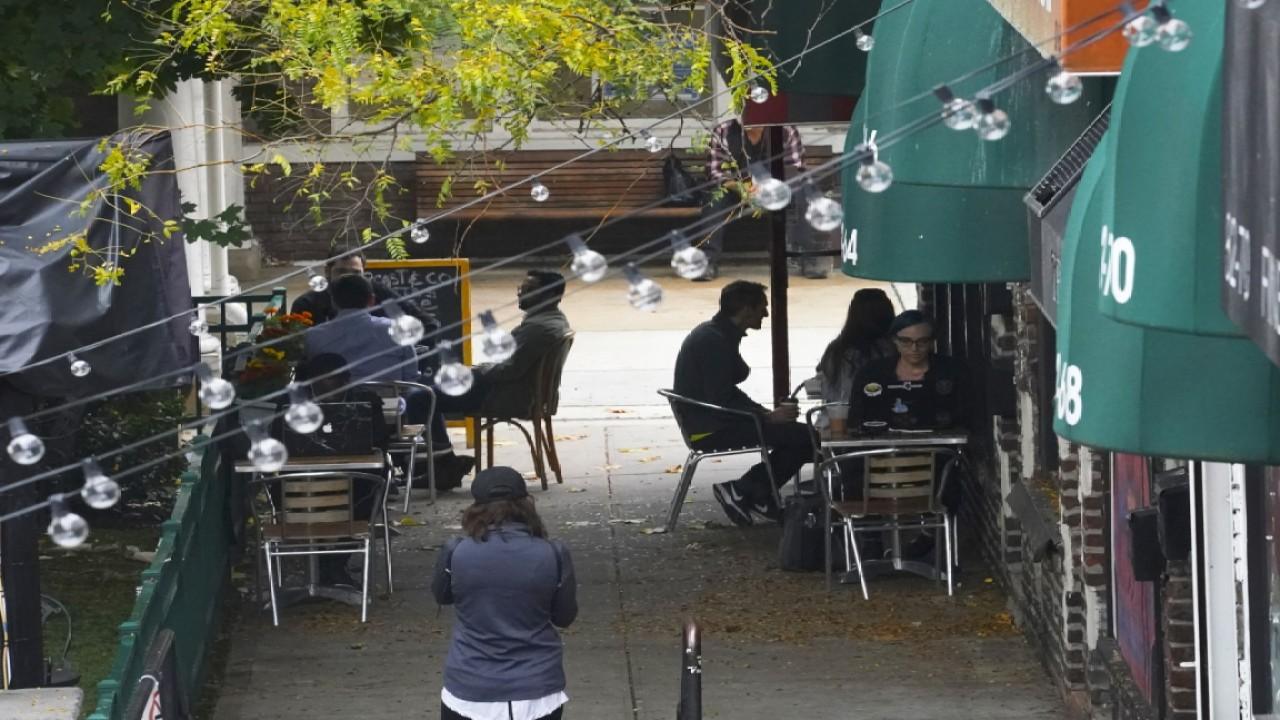How COVID-safe is dining in a restaurant's outdoor tent?
Diners eating in private fully enclosed outdoor structures such as igloos, domes or small greenhouses for individual groups may be safer
As restaurants gear up to extend outdoor dining in colder parts of the country, many are seating guests in enclosed and sometimes heated structures. But when it comes to virus transmission, is eating in covered outdoor setups less risky than inside?
NYC EATERIES BEG GOV. CUOMO TO REOPEN — OR AT LEAST GET SOME INFO
The bottom line
As restaurants try to keep business afloat, many are putting up exterior structures for patrons. But dining tents and other temporary outdoor setups offer a false sense of security and pose just as many risks as indoor eating, professors say. Poor air circulation, proximity to other unmasked diners and time in a poorly ventilated enclosed outdoor space can heighten Covid risks. On the other hand, the transmission risk is higher inside a restaurant than in outdoor structures that are heated yet partially open, or in separate igloos for patrons.
The details
If you are considering dining outdoors, opt for restaurant setups that let air pass through rather than fully enclosed ones, says Jeffrey Siegel a professor of civil engineering at the University of Toronto who studies indoor air quality. "As [structures] become more fully enclosed, they become the same as an indoor environment or in some cases, worse, with a relatively closed volume of air." The lowest-risk outdoor dining setups simply have heating elements with tables spaced far apart from each other and aren't in the way of people passing by, he adds.
PENNSYLVANIA GOVERNOR PROPOSES WAIVING LIQUOR LICENSE FEES
Look for outdoor setups with at least two exposed sides, which helps create a cross breeze to flush out any contaminated air. In structures that are only open on one side or have window openings, it is best to sit closest to the fresh air, he adds. In some instances, closed communal temperature-controlled structures pose the biggest risk for diners and might be worse than eating inside, where there are powerful HVAC systems, quality filters and better airflow, Dr. Siegel says.
"Enclosed spaces defeat the purpose of outdoor seating for Covid purposes," says Iahn Gonsenhauser, chief quality and patient safety officer at the Ohio State University Wexner Medical Center.
GET FOX BUSINESS ON THE GO BY CLICKING HERE
One bright spot: Diners eating in private fully enclosed outdoor structures such as igloos, domes or small greenhouses for individual groups may be safer because the setups lower the risk of transmission from nearby tables. In this case, it is still important to remain at least 3 feet from individuals from other households by sitting at a larger table and to wear masks when not eating or drinking, Dr. Gonsenhauser says.
In addition, make sure structures that accommodate one party at a time are aired out for 15 minutes between diners. The structure should be wiped down thoroughly, including the walls, Dr. Gonsenhauser says. High-touch surfaces in small enclosures are the biggest concern. "You don't want to be bumping anything with the potential to have collected particles," he adds.

